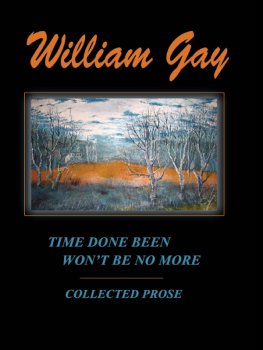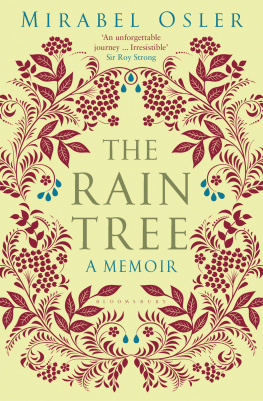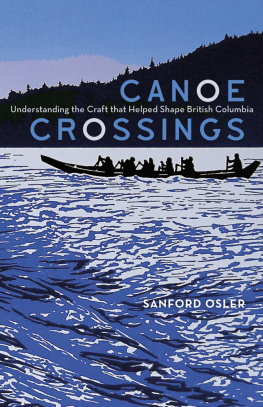William Osler - William Osler - Collection of Essays, Addresses and Biographies
Here you can read online William Osler - William Osler - Collection of Essays, Addresses and Biographies full text of the book (entire story) in english for free. Download pdf and epub, get meaning, cover and reviews about this ebook. genre: Science. Description of the work, (preface) as well as reviews are available. Best literature library LitArk.com created for fans of good reading and offers a wide selection of genres:
Romance novel
Science fiction
Adventure
Detective
Science
History
Home and family
Prose
Art
Politics
Computer
Non-fiction
Religion
Business
Children
Humor
Choose a favorite category and find really read worthwhile books. Enjoy immersion in the world of imagination, feel the emotions of the characters or learn something new for yourself, make an fascinating discovery.

- Book:William Osler - Collection of Essays, Addresses and Biographies
- Author:
- Genre:
- Rating:5 / 5
- Favourites:Add to favourites
- Your mark:
- 100
- 1
- 2
- 3
- 4
- 5
William Osler - Collection of Essays, Addresses and Biographies: summary, description and annotation
We offer to read an annotation, description, summary or preface (depends on what the author of the book "William Osler - Collection of Essays, Addresses and Biographies" wrote himself). If you haven't found the necessary information about the book — write in the comments, we will try to find it.
William Osler: author's other books
Who wrote William Osler - Collection of Essays, Addresses and Biographies? Find out the surname, the name of the author of the book and a list of all author's works by series.
William Osler - Collection of Essays, Addresses and Biographies — read online for free the complete book (whole text) full work
Below is the text of the book, divided by pages. System saving the place of the last page read, allows you to conveniently read the book "William Osler - Collection of Essays, Addresses and Biographies" online for free, without having to search again every time where you left off. Put a bookmark, and you can go to the page where you finished reading at any time.
Font size:
Interval:
Bookmark:
Even where the milder zone afforded man
A seeming shelter, yet contagion there,
Blighting his being with unnumbered ills,
Spread like a quenchless fire; nor truth availed
Till late to arrest its progress, or create
That peace which first in bloodless victory waved
Her snowy standard o'er this favoured clime.
................ Happiness
And Science dawn though late upon the earth;
Peace cheers the mind, health renovates the frame;
Disease and pleasure cease to mingle here,
Reason and passion cease to combat there;
Whilst mind unfettered o'er the earth extends
Its all-subduing energies, and wields
The sceptre of a vast dominion there.
SHELLEY, The Daemon of the World.
XIII
MEDICINE IN THE NINETEENTH
CENTURY1
For countless generations the prophets and kings or humanity have desired to see the things which men have seen, and to hear the things which men have heard in the course of the wonderful nineteenth century. To the call or the watchers on the towers of progress there had been the one sad answer the people sit in darkness and in the shadow of death. Politically, socially, and morally the race had improved, but for the unit, for the individual, there was little hope. Cold philosophy shed a glimmer of light on his path, religion in its various guises illumined his sad heart, but neither availed to lift the curse of suffering from the sin-begotten son of Adam. In the fulness of time, long expected, long delayed, at last Science emptied upon him from the horn of Amalthea blessings which cannot be enumerated, blessings which have made the century forever memorable; and which have followed each other with a rapidity so bewildering that we know not what next to expect. To us in the medical profession, who deal with this unit, and measure progress by the law of the greatest happiness to the greatest number, to us whose work is with the sick and suffering, the great boon of this wonderful century, with which no other can be compared, is the fact that the leaves or the tree of Science have been for the healing of the nations. Measure as we may the progress of the world materially, in the advantages of steam, electricity, and other mechanical appliances; sociologically, in the great improvement in the conditions of life; intellectually, in the diffusion of education; morally, in a possibly higher standard of ethics there is no one measure which can compare with the decrease of physical suffering in man, woman, and child when stricken by disease or accident. This is the one fact of supreme personal import to everyone of us. This is the Promethean gift of the century to man.
THE GROWTH OF SCIENTIFIC MEDICINE
The century opened auspiciously, and those who were awake saw signs of the dawn. The spirit of Science was brooding on the waters. In England the influence of John Hunter stimulated the younger men to the study of the problems of anatomy and pathology. On the Continent the. great Boerhaave the Batavian Hippocrates had taught correct ways in the study of the clinical aspects of disease, and the work of Haller had given a great impetus to physiology. The researches of Morgagni had, as Virchow has remarked, introduced anatomical thinking into medicine. But theories still controlled practice. Under the teaching of Cullen, the old idea that humours were the seat of disease had given place to a neuropathology which recognized the paramount influence of the nervous system in disease. His colleague at Edinburgh, Brown, brought forward the attractive theory that all diseases could be divided into two groups, the one caused by excess of excitement the sthenic the other by deficiency the asthenic each having its appropriate treatment, the one by depletion, the other by stimulation. In a certain measure Hahnemann's theory of homopathy was a reaction against the prevalent theories of the day, and has survived through the century, though in a much modified form. Some of his views were as follows:
"The only vocation of the physician is to heal; theoretical knowledge is of no use. In a case of sickness he should only know what is curable and the remedies. Of the diseases he cannot know anything except the symptoms. There are internal changes, but it is impossible to learn what they are; symptoms alone are accessible; with their removal by remedies the disease is removed. Their effects can be studied in the healthy only. They act on the sick by causing a disease similar to that which is to be combated, and which dissolves itself into this similar affection. The full doses required to cause symptoms in the well are too large to be employed as remedies for the sick. The healing power of a drug grows in an inverse proportion to its substance. He says, literally: 'Only potencies are homopathic medicines.' 'I recognize nobody as my follower but him who gives medicine in so small doses as to preclude the perception of anything medicinal in them by means either of the senses or of chemistry.' 'The pellets may be held near the young infant when asleep.' 'Gliding the hand over the patient will cure him, provided the manipulation is done with firm intention to render as much good with it as possible, for its power is in the benevolent will of the manipulator.' Such is the homopathy of Hahnemann, which is no longer recognized in what they call homopathy to-day." (A. Jacobi.)
The awakening came in France. In 1801 Bichat, a young man, published a work on general anatomy, in which he placed the seat of disease, not in the organs, but in the tissues or fabrics of which they were composed, which gave an extraordinary impetus to the investigation of pathological changes. Meanwhile, the study of the appearances of organs and bodies when diseased (morbid anatomy), which had been prosecuted with vigor by Morgagni in the eighteenth century, had been carried on actively in Great Britain and on the Continent, and the work of Broussais stimulated a more accurate investigation of local disorders. The discovery by Laennec of the art of auscultation, by which, through changes in the normal sounds within the chest, various diseases of the heart and lungs could be recognized, gave an immense impetus to clinical research. The art of percussion, discovered by Auenbrugger in the eighteenth century, and reintroduced by Corvisart, contributed not a little to the same. Laennec's contributions to the study of diseases of the lungs, of the heart, and of the abdominal organs really laid the foundation of modern clinical medicine. A little later Bright published his researches on diseases of the kidneys, from which we date our knowledge of this important subject. One of the most complicated problems of the first half of the century related to the differentiation of the fevers. The eruptive fevers, measles, scarlet fever, and small-pox were easily recognized, and the great group of malarial fevers was well known; but there remained the large class of continued fevers, which had been a Source of worry and dispute for many generations. Louis clearly differentiated typhoid fever, and by the work of his American pupils, W. W. Gerhard and Alfred Stille, of Philadelphia, and George B. Shattuck, of Boston, typhus and typhoid fevers were defined as separate and independent affections. Relapsing fever, yellow fever, dengue, etc., were also distinguished. The work of Graves and Stokes, of Dublin; of Jenner and Budd, in England; of Drake, Dickson, and Flint, in America, supplemented the labours of the French physicians, and by the year 1860 the profession had reached a sure and safe position on the question of the clinical aspects of fevers.
The most distinguishing feature of the scientific medicine of the century has been the phenomenal results which have followed experimental investigations. While this method of research is not new, since it was introduced by Galen, perfected by Harvey, and carried on by Hunter, it was not until well into the middle of the century that, by the growth of research laboratories, the method exercised a deep influence on progress. The lines of experimental research have sought to determine the functions of the organs in health, the conditions under which perversion of these functions occurs in diseases, and the possibility of exercising protective and curative influences on the processes of disease.
Font size:
Interval:
Bookmark:
Similar books «William Osler - Collection of Essays, Addresses and Biographies»
Look at similar books to William Osler - Collection of Essays, Addresses and Biographies. We have selected literature similar in name and meaning in the hope of providing readers with more options to find new, interesting, not yet read works.
Discussion, reviews of the book William Osler - Collection of Essays, Addresses and Biographies and just readers' own opinions. Leave your comments, write what you think about the work, its meaning or the main characters. Specify what exactly you liked and what you didn't like, and why you think so.






